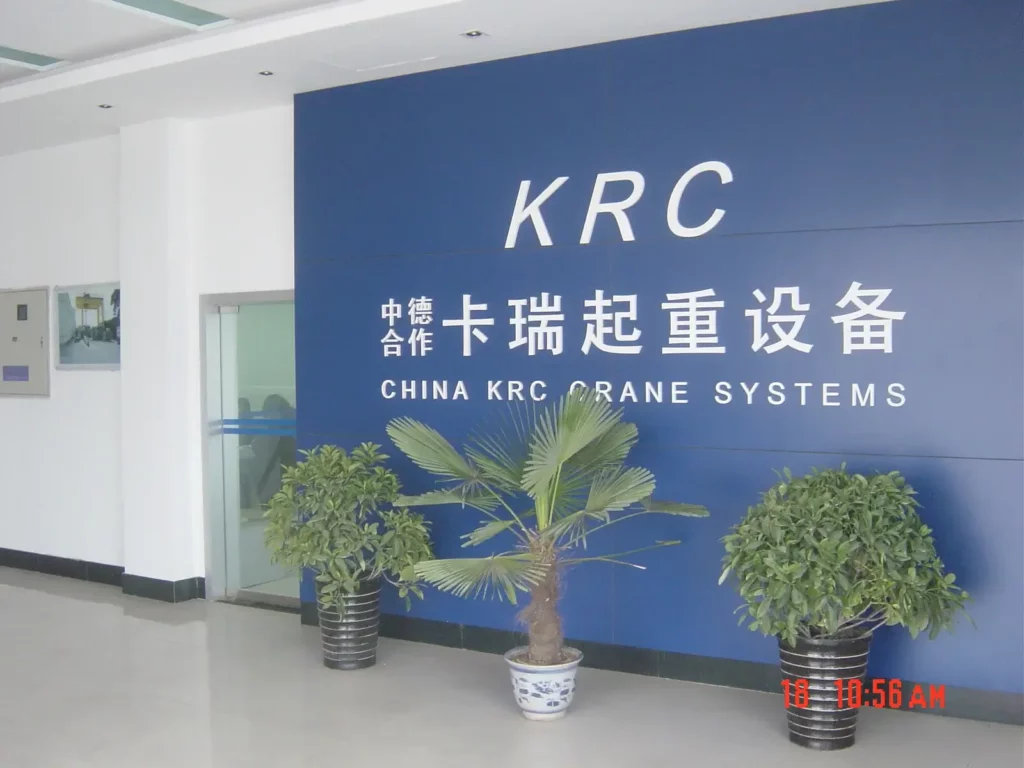Are you curious about the best cranes that keep our ports and construction sites running smoothly? In the bustling world of heavy machinery, quay cranes and gantry cranes play pivotal roles, and understanding the top factories in China can make all the difference. By comparing these leading manufacturers, you’ll uncover insights that can save you time and money while ensuring you choose the right equipment for your needs. Ready to elevate your knowledge and make informed decisions? Let’s dive into the world of cranes and discover the top factories that stand out in quality and innovation!
Port Cranes: Everything You Need to Know – freightcourse
Product Details: Loader
Technical Parameters:
– Generic Parameter 1
– Generic Parameter 2
Application Scenarios:
– Generic Scenario 1
– Generic Scenario 2
Pros:
– Generic Pro 1
– Generic Pro 2
Cons:
– Generic Con 1
– Generic Con 2
Different Types Of Container Cranes, Shipyard Cranes, Cargo Cranes Used …
Product Details: Different types of cranes used in ports, including Ship to Shore Crane, Portal Crane, Wheel Bucket Stacker Reclaimer, Screw Ship Unloader, Rail Mounted Gantry Cranes, Rubber Tyred Gantry Crane, Straddle Carriers, Reach Stacker, Automated Guided Vehicles, Shipbuilding Gantry Crane, Mobil Boat Crane, and Shipyard Portal Cranes.
Technical Parameters:
– High working efficiency
– Variable amplitude
Application Scenarios:
– Loading and unloading containers at ports
– Cargo transportation in shipping industry
Pros:
– Increases efficiency in cargo handling
– Versatile applications across different types of cranes
Cons:
– High energy consumption for some models
– Requires significant space for operation
Container Cranes – SpringerLink
Product Details: Quayside container crane, rail-mounted gantry crane, rubber-tired gantry crane (RTG), lightweight rubber-tired gantry crane.
Technical Parameters:
– Metal structure characteristics
– Operating mechanisms and electrical systems
Application Scenarios:
– Port operations
– Container handling
Pros:
– High efficiency in container loading and unloading
– Versatile applications in different port environments
Cons:
– High maintenance costs
– Requires significant space for operation
Port cranes: functions, types and sizes – igus® Engineer’s Toolbox
Product Details: Various types of port cranes including RTG, RMG, ASC, STS, deck cranes, crane barges, tower cranes, reach stackers, and level luffing cranes.
Technical Parameters:
– Lifting capacity: 2 to over 100 tons
– Reach: 13 to 25 container rows
Application Scenarios:
– Loading and unloading shipping containers at ports
– Moving and stacking containers in container yards
Pros:
– High efficiency and productivity in container handling
– Variety of types suitable for different port operations
Cons:
– Requires significant space for operation
– High initial investment and maintenance costs
Container Gantry Crane: Operation And Benefits | Dafang Crane
Product Details: Container gantry cranes are heavy-duty machines designed to lift and move shipping containers in ports and container terminals.
Technical Parameters:
– Lifting capacity: up to 50 tons or more
– Main structure: large steel frame supported by four or more legs
Application Scenarios:
– Loading and unloading intermodal containers from ships
– Moving large volumes of cargo between ships and trucks or trains
Pros:
– Increased efficiency and productivity
– Cost-effective solution for handling cargo
Cons:
– Requires significant initial investment
– Maintenance can be costly and complex
Quay gantry crane (QC)/ Ship to shore crane (STS) | PPT – SlideShare
Product Details: Quay Gantry Crane (QGC) is essential for loading and unloading containers at seaports, equipped with a spreader for handling containers.
Technical Parameters:
– Gantry span: 15 – 35 m
– Lift height: 24 – 49 m
– SWL: 40/50 t single | 65 t twin
– Hoisting speed: 50/175 m/min
– Travel speed: 45 m/min
Application Scenarios:
– Container handling at seaports
– Transshipment between vessels and trucks
Pros:
– High efficiency in container handling
– Ability to lift multiple containers simultaneously
Cons:
– High initial investment cost
– Requires significant space for operation
Quay Cranes (QC) in Container Terminal Cargo: Intermodal Gantry Price …
Product Details: Quay Cranes (QC) are essential for container and terminal operations, providing high efficiency and safety in loading and unloading containers from vessels.
Technical Parameters:
– Automated systems with spreader locks
– High-speed container handling capabilities
Application Scenarios:
– Container terminals for loading and unloading
– Intermodal transport operations across ports
Pros:
– Enhanced operational efficiency and throughput
– Improved safety protocols and reduced human error
Cons:
– High initial costs for automation and technology
– Requires skilled personnel for operation and maintenance
quay crane
Product Details: Quayside container cranes (STS, QC) with a capacity of 5~80t, span of 10.5~16m, and a max lifting height of 45m.
Technical Parameters:
– Rated Load: Under Spreader 40t, Under Headlock 50t
– Out Reach: 35m, Rail Gauge: 16m, Back Reach: 12m
Application Scenarios:
– Container handling at ports
– Heavy lifting in shipping yards
Pros:
– Variable speed and soft starter
– PLC automatic control system
Cons:
– High initial investment cost
– Requires skilled operators for safe operation
Top Gantry Crane Manufacturers: Europe vs. China
Product Details: Gantry cranes from leading European and Chinese manufacturers, designed for heavy load handling and efficient movement in various industries.
Technical Parameters:
– Load capacity: 1 ton to 100 tons
– Customization options available
Application Scenarios:
– Manufacturing and construction
– Shipping and logistics
Pros:
– High-quality materials and construction
– Cost-effective options available
Cons:
– Higher initial cost for European cranes
– Variability in quality for Chinese cranes
Product Details: Liebherr Ship to Shore Gantry Cranes (STS) designed for high performance in container handling.
Technical Parameters:
– Gantry span: 15 – 50 m
– Lift height: 20 – 54+ m
– SWL: 40/50 t single | 65 t twin | 70 t twin | 120 t tandem
– Hoisting speed: 50/125 m/min to 90/180 m/min
– Travel speed: 45 – 180 m/min
– In service wind speed: 72 km/h
– Out of service wind speed: 151.2 km/h
– Ambient temperature range: -40° to 50°C
Application Scenarios:
– Container handling at ports
– Loading and unloading of ships
Pros:
– High tensile steel construction for reduced weight and increased stability
– Optimized joystick/drive response for improved performance
– Ergonomic driver’s cabin with high visibility
– Extensive training and worldwide service network
Cons:
– Potentially high initial investment cost
– Requires skilled operators for optimal performance
Related Video
Comparison Table
| Company | Product Details | Pros | Cons | Website |
|---|---|---|---|---|
| Port Cranes: Everything You Need to Know – freightcourse | Loader | – Generic Pro 1 – Generic Pro 2 | – Generic Con 1 – Generic Con 2 | www.freightcourse.com |
| Different Types Of Container Cranes, Shipyard Cranes, Cargo Cranes Used … | Different types of cranes used in ports, including Ship to Shore Crane, Portal Crane, Wheel Bucket Stacker Reclaimer, Screw Ship Unloader, Rail Mounte… | – Increases efficiency in cargo handling – Versatile applications across different types of cranes | – High energy consumption for some models – Requires significant space for operation | www.dgcrane.com |
| Container Cranes – SpringerLink | Quayside container crane, rail-mounted gantry crane, rubber-tired gantry crane (RTG), lightweight rubber-tired gantry crane. | – High efficiency in container loading and unloading – Versatile applications in different port environments | – High maintenance costs – Requires significant space for operation | link.springer.com |
| Port cranes: functions, types and sizes – igus® Engineer’s Toolbox | Various types of port cranes including RTG, RMG, ASC, STS, deck cranes, crane barges, tower cranes, reach stackers, and level luffing cranes. | – High efficiency and productivity in container handling – Variety of types suitable for different port operations | – Requires significant space for operation – High initial investment and maintenance costs | toolbox.igus.com |
| Container Gantry Crane: Operation And Benefits | Dafang Crane | Container gantry cranes are heavy-duty machines designed to lift and move shipping containers in ports and container terminals. | – Increased efficiency and productivity – Cost-effective solution for handling cargo | – Requires significant initial investment – Maintenance can be costly and complex |
| Quay gantry crane (QC)/ Ship to shore crane (STS) | PPT – SlideShare | Quay Gantry Crane (QGC) is essential for loading and unloading containers at seaports, equipped with a spreader for handling containers. | – High efficiency in container handling – Ability to lift multiple containers simultaneously | – High initial investment cost – Requires significant space for operation |
| Quay Cranes (QC) in Container Terminal Cargo: Intermodal Gantry Price … | Quay Cranes (QC) are essential for container and terminal operations, providing high efficiency and safety in loading and unloading containers from ve… | – Enhanced operational efficiency and throughput – Improved safety protocols and reduced human error | – High initial costs for automation and technology – Requires skilled personnel for operation and maintenance | contpark.com |
| quay crane | Quayside container cranes (STS, QC) with a capacity of 5~80t, span of 10.5~16m, and a max lifting height of 45m. | – Variable speed and soft starter – PLC automatic control system | – High initial investment cost – Requires skilled operators for safe operation | www.hycranes.com |
| Top Gantry Crane Manufacturers: Europe vs. China | Gantry cranes from leading European and Chinese manufacturers, designed for heavy load handling and efficient movement in various industries. | – High-quality materials and construction – Cost-effective options available | – Higher initial cost for European cranes – Variability in quality for Chinese cranes | www.bettercrane.com |
| Liebherr Ship to Shore Gantry Cranes (STS) designed for high performance in container handling. | – High tensile steel construction for reduced weight and increased stability – Optimized joystick/drive response for improved performance – Ergonomic… | – Potentially high initial investment cost – Requires skilled operators for optimal performance | www.liebherr.com |
Frequently Asked Questions (FAQs)
What is the main difference between a quay crane and a gantry crane?
The primary difference lies in their design and usage. Quay cranes are specifically designed for loading and unloading containers from ships at ports, featuring a tall, narrow structure. Gantry cranes, on the other hand, are versatile and can be used in various settings, including factories and construction sites, with a wider base and often movable on tracks.
Which type of crane is more suitable for container handling?
Quay cranes are more suitable for container handling at ports due to their height and reach, allowing them to easily access containers stacked on ships. Gantry cranes can also handle containers but are typically used in land-based operations.
Are quay cranes more expensive than gantry cranes?
Generally, quay cranes are more expensive due to their specialized design, larger size, and advanced technology required for maritime operations. Gantry cranes tend to be more cost-effective and can be customized for various applications, making them a popular choice for many industries.
What factors should I consider when choosing between quay and gantry cranes?
Consider the specific application, space availability, and budget. If you need to handle containers at a port, a quay crane is ideal. For general lifting tasks in factories or construction sites, a gantry crane may be more appropriate. Also, think about maintenance and operational costs.
How do the manufacturing processes differ for quay and gantry cranes in China?
The manufacturing processes differ mainly in complexity and scale. Quay cranes require advanced engineering and precision due to their size and operational demands, often involving specialized materials. Gantry cranes have a simpler design, allowing for more streamlined production, which can lead to faster manufacturing times.

